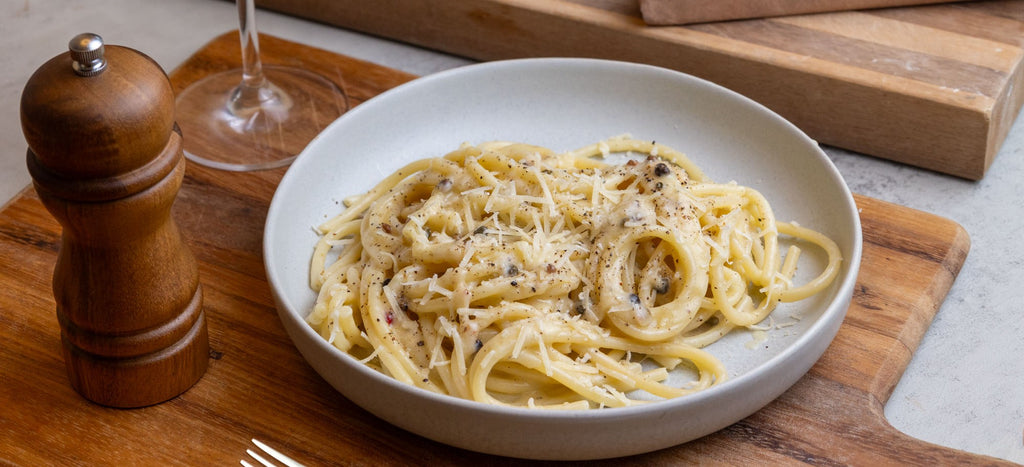Italy is home to the largest variety of olives in the world—the country grows more than 500 different types!
Most of Italy’s olives are used exclusively to make oil, but a good number of them are so delicious they’re also eaten whole, what’s known as a table olive. From tiny, dark purple gems to crisp green giants, the table olives of Italy run the gamut of flavor and texture. There really is an olive for everyone—even those who swear they don’t like the pungent little gems. While we can’t go over all 500 types, we’ve put together a guide to the best-known table olives in Italy, from where they grow to what to do with them.
Before we get into the different types, there are a few basic facts to know about olives that will help guide you to the ones you’ll like best. First, the difference between a green and black olive just comes down to ripeness: olives are a fruit, and like all fruits they are green before they’re ripe, gradually turning a deep purple color as they mature. Their flavor develops as they ripen, so in general, a black olive will be more deeply flavorful than a green one. Some olive types can be enjoyed in both states, while others are only tasty when they’re green (or, conversely, only enjoyable when fully ripe).
After they’re picked, olives must be cured before they can be eaten to remove the fruit’s natural bitterness. There’s a reason you never see people eating olives right from the tree! The curing process can be achieved through brining, which results in a sweeter flavor and plump texture; packing them in salt, which pulls out moisture from the fruit and gives a softer texture and more intense flavor (oil-packed olives are those that were first salt-packed, then rinsed and jarred in olive oil); and air-drying, which makes for a very wrinkly and intense final product with a dense texture. Depending on your taste, you might find you prefer brined olives over salt-packed, or vice versa.
Now, on to the Italian olives!

Ascolana del Piceno
Origin: Marche, in the province of Ascoli Piceno
Flavor: This variety from the small central Italian region is medium-sized and round, with a firm, crunchy texture. They are harvested when green, giving them a milder, moderately briny flavor that’s great for snacking.
How to Enjoy: These are typically served in the local delicacy olive all’ascolana, a decadent snack of olives stuffed with meat, coated in breadcrumbs and deep-fried.

Bella di Cerignola
Origin: Puglia, in the province of Foggia
Flavor: These brined olives are crisp, buttery, and a little sweet. Known as the biggest olives in the world, they’re excellent for stuffing with gorgonzola, garlic, anchovies….whatever your heart desires! They’re more commonly seen in the U.S. in their milder green form, though they’re equally beloved at home in their fully ripe black form.
How to enjoy: When they’re green, enjoy fresh in a Chopped Pasta Salad or as an aperitivo nibble. The black version adds depth of flavor to dishes like the local calzone di cipolle pugliese.

Castelvetrano
Origin: Sicily, specifically in the Belice River valley near Trapani
Flavor: Also known as nocellara del Belice, these brined olives have become very popular in the U.S. for their soft, buttery flavor. They’re an excellent “gateway olive” for those who don’t love more pungent varieties; they’re harvested very early, giving them a bright green color, a mild saltiness, and a crisp, firm texture. Be sure to buy them whole; pitted versions become mushy and unpleasant very quickly.
How to enjoy: On their own, as part of a charcuterie board with cured meats and fresh cheese, or as a martini garnish. Oil made from these olives is deep green and intensely herbal.

Leccino
Origin: Tuscany, now grown throughout central Italy
Flavor: These smallish olives are harvested when mature and can be found brined or oil-packed. They’re soft, intensely flavored, and a little bitter—a true olive-lover’s delight. We especially like the oil-packed version, which tempers their rich flavor with buttery oil.
How to enjoy: Chop these and add to recipes where you want a punch of deep olive flavor to play off other fragrant ingredients, like Giada’s Potato Pizza with Olives and Rosemary.

Peranzana
Origin: Puglia
Flavor: Smallish and with a thin skin, these intensely flavored little gems are harvested when fully ripe and either brined or oil-packed. They have a mild bitterness that balances beautifully with deep, salty notes and a rich umami character.
How to Enjoy: Sprinkle these deeply flavored little olives into a recipe to give it a boost of flavor, like in Giada’s Tuscan Salad. Oil made from Peranzana olives is fruity and well-balanced.

Taggiasca
Origin: Liguria
Flavor: Grown in the north of Italy, these little olives are the same as the French Niçoise variety. They’re harvested as they near maturity, ranging in color from greenish brown to light purple, and are typically cured in an aromatic brine with rosemary, bay leaves and thyme. They are known for their nuanced, fruity flavor, with a subtle sweetness and low bitterness.
How to enjoy: Their rich flavor makes a great complement to baked goods like Giada’s version of Focaccia Barese and shines when blended into a tapenade. They also make a deliciously mild, sweet olive oil.

Gaeta
Origin: Lazio, around the coastal city of Gaeta
Flavor: Also known as itrana, this variety can be found either salt-cured and chewy or brined and plump. They’re very similar to the Greek variety kalamata, which can be a handy substitute if you can’t find gaetas near you. Harvested when they’re a dark purple, they have a soft, tender flesh and a bold, somewhat tart flavor.
How to Enjoy: As they are grown halfway between Rome and Naples, Gaeta olives are featured in some of the classic dishes of both cities, like Pasta Puttanesca.





















0 comments